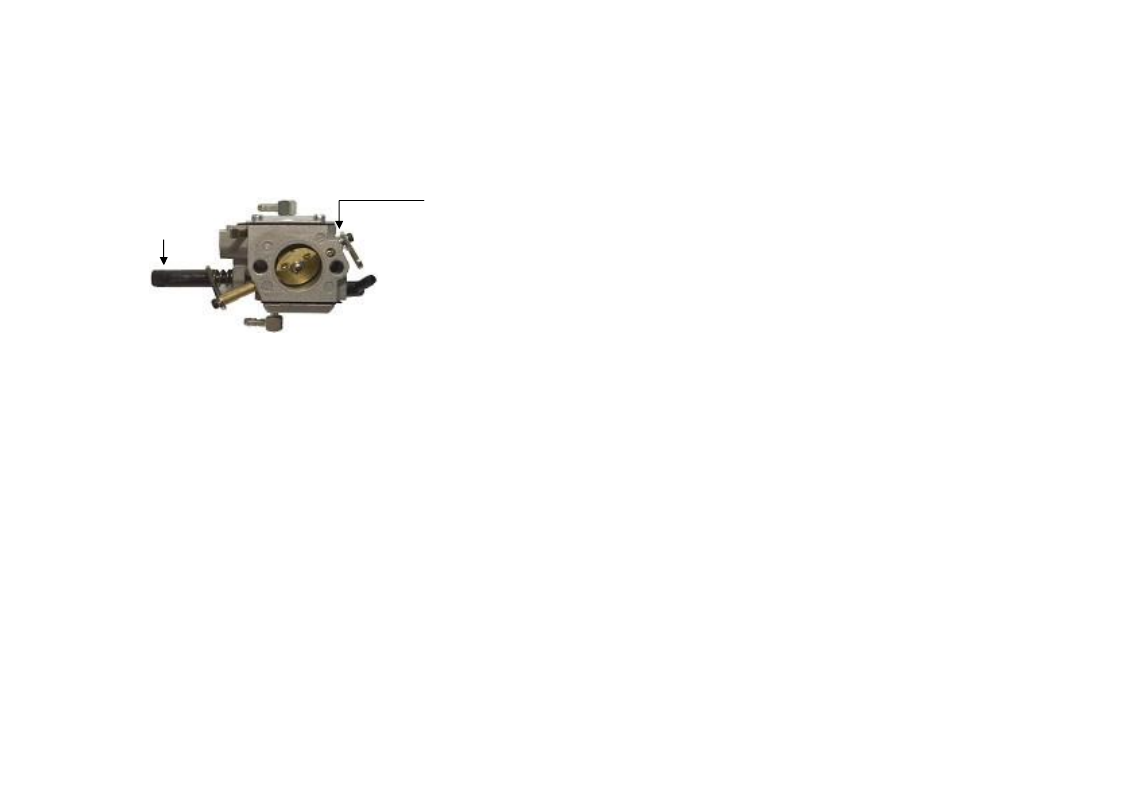MVVS 80 IRS User Manual
Page 4

The choke valve is set to allow minimum air flow only when fully closed, which could cause
damage to the intake reed valve.
Depending on the throttle control used there is a possibility to use throttle stop-screw.
If the throttle pull rod is not equipped with flexible element it is recommended NOT to put
off the throttle valve spring. Otherwise the vibrations of the engine can cause excessive wear
of the throttle valve shafting and with this deteriorate the carburetor function.
Adjusting carburetor position
You can turn the rear cover by 90
° which makes it possible to adjust the carburetor’s
position (especially its adjusting needles) when fixing it in the model.
How to dismantle the rear cover:
Unscrew two M5 screws that hold the carburetor in place, remove the pressure hose from the
carburetor (mind the gasket under the carburetor), remove the carburetor and loosen four M5
screws along the crankcase (Caution! Do not loosen the M4 screws that fix the reed-valve to
the rear cover).
Remove the rear cover by pulling it out of the crankcase – never use a hammer or any other
similar tool. The rear cover is sealed in the crankcase with two sealing rings – therefore more
strength is needed, however, it must always be pull only!
Make sure you disassemble the engine in a clean environment!
Position the rear cover as desired, carefully insert it in the crankcase and tighten the screws.
Do not forget insert the gasket when reassembling the carburetor.
Throttle stop
screw
Throttle lever
spring
Starting and running in a new engine
Before you first start the engine, screw the plug in and tighten it up. Follow the instructions
on the box of the spark plug. Make sure that the plug socket is fitted in place and fastened
down properly; pull the wire ring over the hexagon. Fix the ignition sensor in proper position
above the magnet with screws enclosed.
Unless the spark plug is not inserted in plug socket, never turn the engine with ignition
turned on. This could lead to ignition damage!
1) Make sure that the ignition is switched off, the choke valve is closed and the throttle valve
is about half opened. Then give the engine 3-4 turns, provided that carburetor is not
overflowing. If it is overflowing, only give the engine 1-2 turns.
2) Switch the ignition on, open the choke valve, set the throttle at slightly higher idle speed
and give the engine a few quickly turns. If even after the fourth turn, with the choke valve
opened, you do not hear a suggestion of the engine starting, give the engine 2 turns
following the instructions in paragraph 1 above. Then proceed according to instructions
given in paragraph 2.
3) If the engine does not start even after another set of turns open the throttle to maximum
and give the engine approx. 4 turns. Switch the ignition off and on again and restart the
engine with throttle turned slightly down and the choke valve set open.
4) If the engine still would not start, unscrew the plug and check its contacts. Clean any
possible petrol moisture (i.e. an indication of engine overflow) and screw it in again. Further
starting should only be done with the throttle turned down. If the plug is dry then probably
not enough fuel has been drawn into the carburetor. If that is the case, check the fuel feed
and then return to the instructions given in paragraph 1.
If the engine starts to run backwards do not open the throttle - stop the engine
immediately! Otherwise the engine can be damaged!
Having started the engine, leave it running for approx. 2 min at a higher idle speed. Then run
it in for approx. 20 min, while changing revolutions from idle to 1/2-3/4 of the range and
shortly holding each position - gradually prolong the holding periods. After 10 minutes of
operation start opening the throttle at maximum for short periods of time. Stop the engine
and let it cool down. Then restart it and check the adjustment. If everything is all right, you
can first take off. During first few flights do not overload the engine and do not let it run at
high revolutions for long periods of time (very important at hot weather). Use up all fuel that
